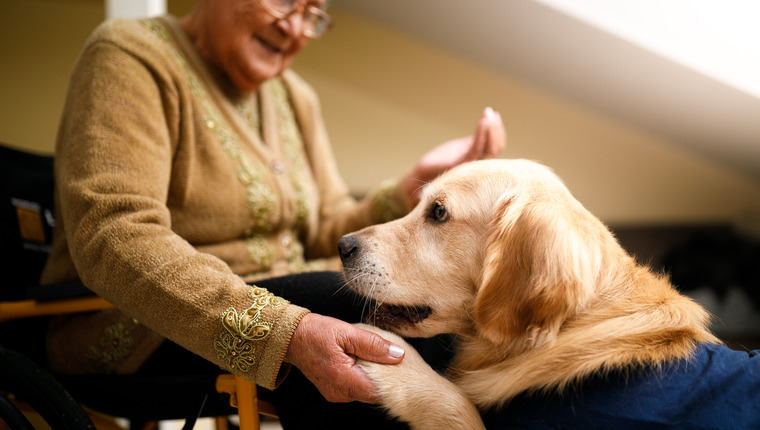
Therapy dogs – why?
You’ve probably heard about them. Maybe you’ve read news stories about them, or you’ve seen them at your college, your child’s school, in hospital – or even in the office. But, what’s the deal?
What are the benefits, and where might you find them? Let’s find out.
What Are Therapy Dogs?
Therapy dogs are trained to provide comfort or support to people in a variety of settings. Studies have shown that they help people with conditions like anxiety, stress, and depression, as well as improving social skills.
To become a therapy dog, a dog doesn’t need to belong to a particular breed. However, some breeds are particularly well-suited to the role based on their temperament. For example, Golden Retrievers and Labrador Retrievers are often used as therapy dogs, as are Cavalier King Charles Spaniels and Portuguese Water Dogs.
What’s the History?
You might think of them as being more of a new thing. After all, we grew up hearing about and seeing seeing-eye dogs, but therapy dogs?
In fact, as early as the 19th century Florence Nightingale noted that pets helped in reducing anxiety of both children and adults in psychiatric institutions. And Sigmund Freud even used his own pet dog when interacting with patients in the 1930s.
Types of Therapy Dogs
Generally, therapy dogs aren’t assistance or service dogs, though some can be both.
Visitation dogs
Visitation dogs are often pets, and they visit institutions like hospitals, nursing homes, and schools, helping to improve mental health and reduce stress and anxiety. Sometimes, children in schools will read to visitation dogs, to boost their skills or improve their confidence.
Facility dogs
These pups tend to live in facilities like nursing homes with their handlers. Like visitation dogs, they help support residents.
Grief therapy dogs
These are used in locations like nursing homes, funeral homes, hospitals, and schools, to help people who might be grieving. They might support people as part of counseling sessions, or help out in the aftermath of a disaster or tragedy.
For example, these dogs have supported students and staff after school shootings, particularly when children might be reluctant to return to school, or lost friends or teachers.
What Are the risks?
Some people are concerned about the use of these support dogs in various settings. Issues they might bring up include hygiene, potential allergies, animal welfare, and the safety of humans involved – particularly where someone might have a fear of dogs.
Certainly, more research should be done on the use of dogs in these settings. But, the Centers for Disease Control and Prevention (CDC) have not yet received any reports of infection or illness through dog therapy in medically-controlled environments.
Legal Status
In the United States, neither the Americans with Disabilities Act nor the Federal Housing Act cover therapy dogs. Thus, they don’t have legal protection as service animals, and private businesses can refuse entry.
To find out more about therapy dogs in the U.S., the Alliance of Therapy Dogs has plenty of further information on its website.









